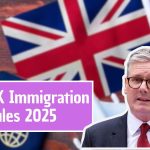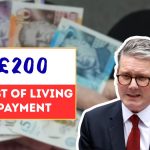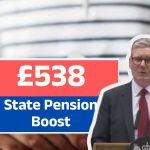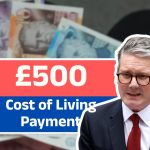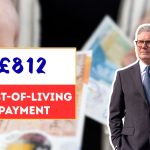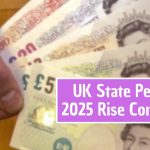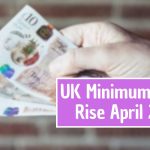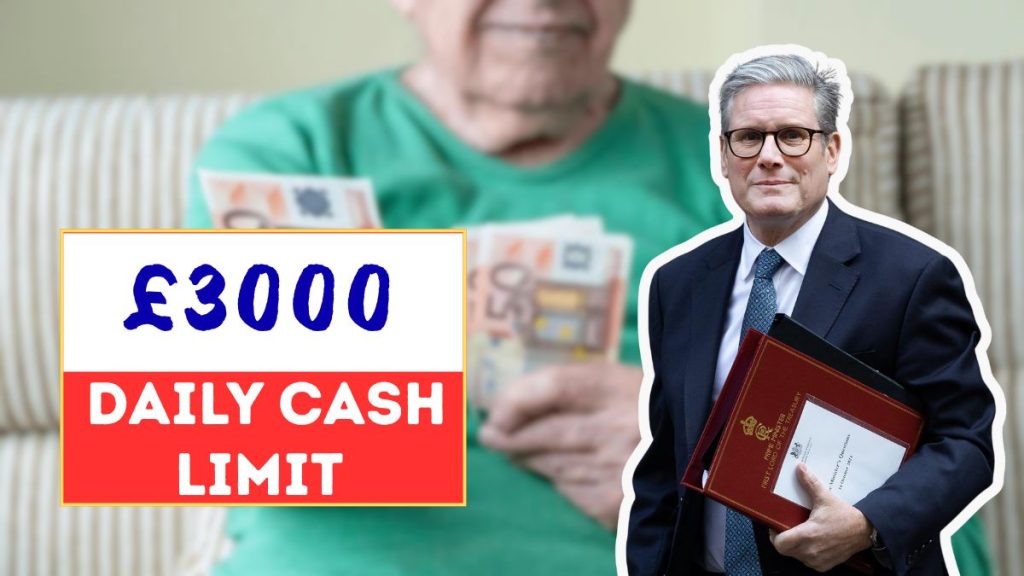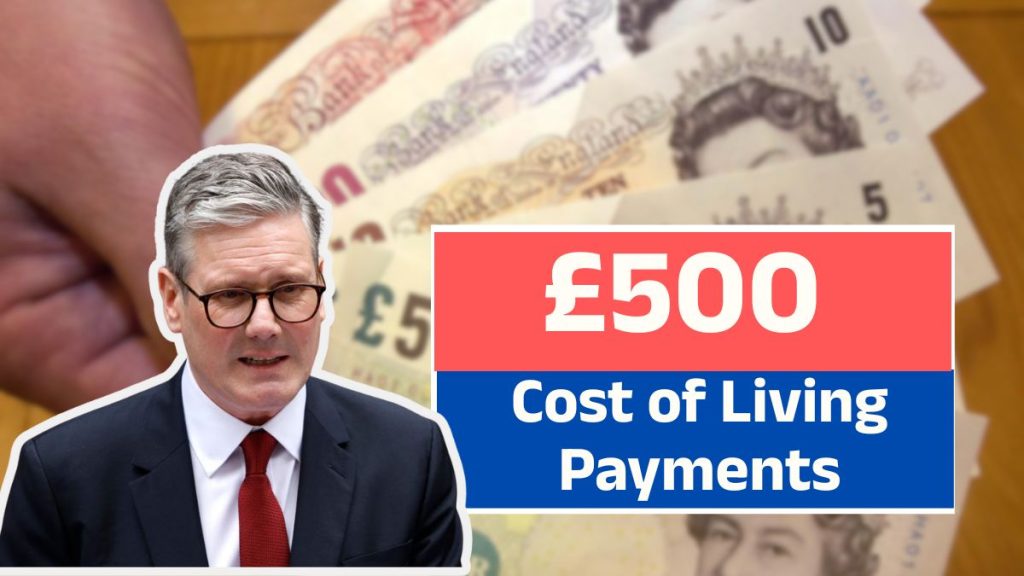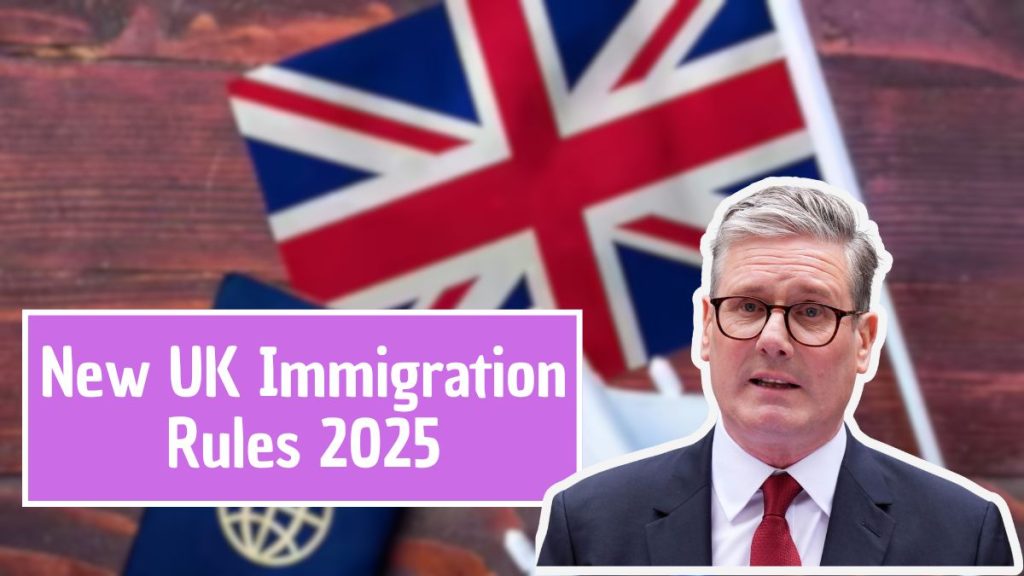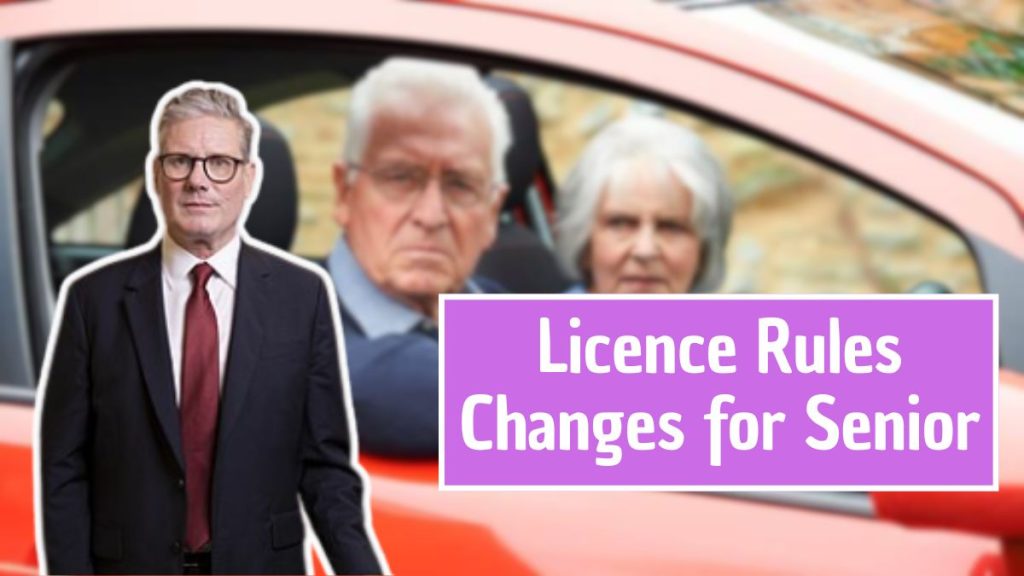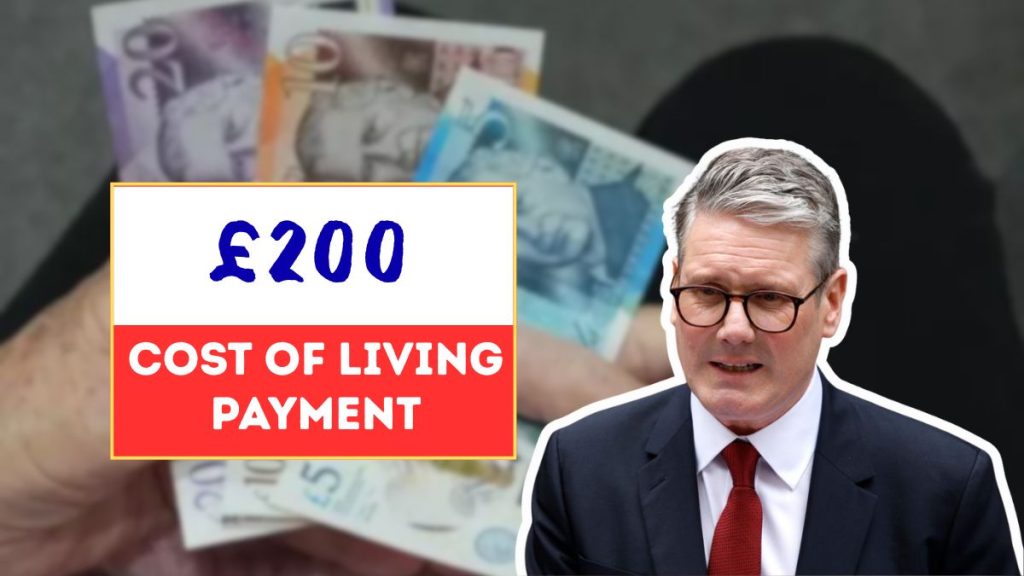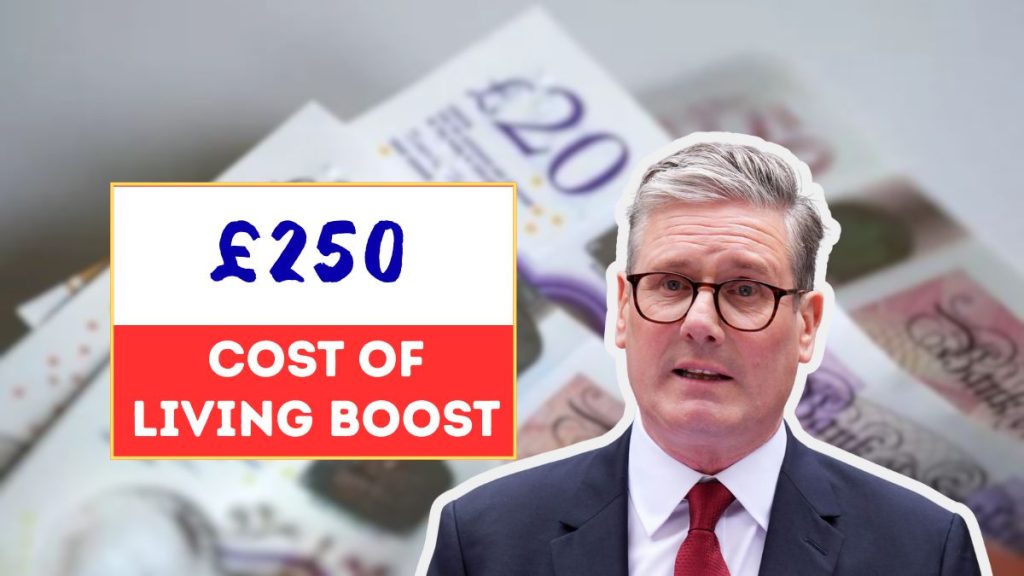With households across the UK still feeling the squeeze from high living costs, many have been anxiously awaiting news of further government support. The ongoing financial strain caused by elevated prices for food, energy, and housing has made government assistance an essential buffer for millions. In a move to address this, the Department for Work and Pensions (DWP) has confirmed plans for a £500 Cost of Living Payment in 2025. This targeted financial aid is designed to ease the pressure on the most vulnerable groups struggling with the current economic climate, and understanding your eligibility for the £500 Cost of Living Payment is the first step toward getting this crucial help.
£500 Cost of Living Payment Confirmed for 2025
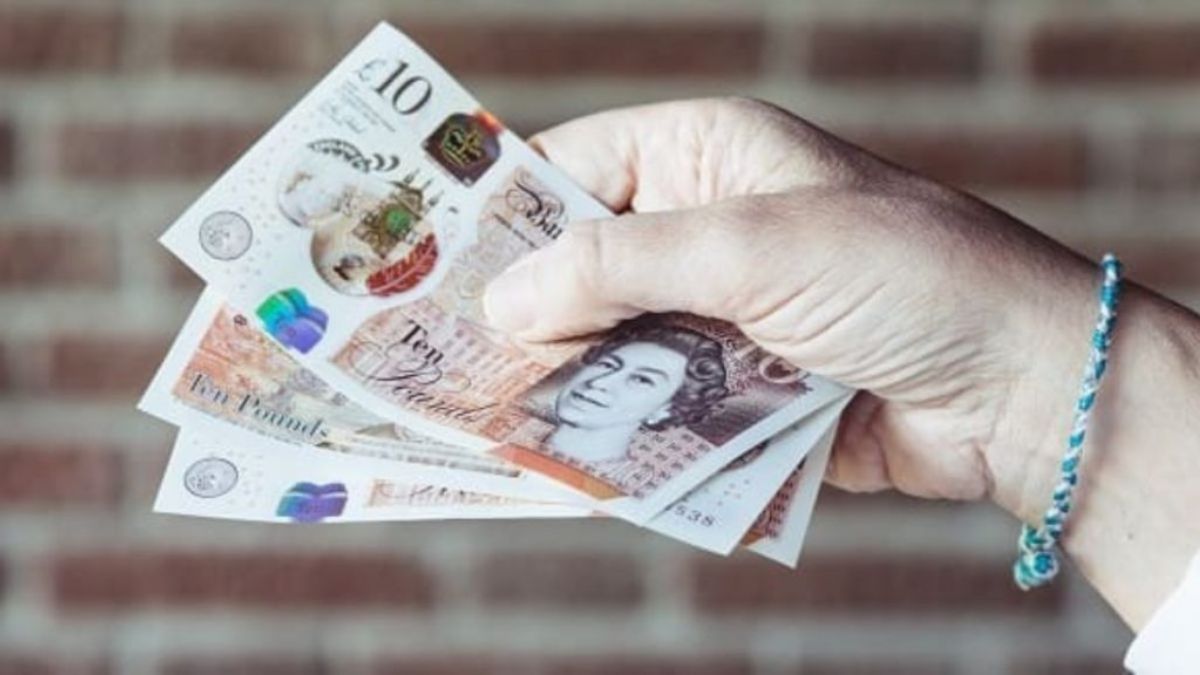
The confirmation of a £500 Cost of Living Payment comes as a lifeline for millions of pensioners, disabled individuals, and low-income households. Unlike universal support schemes of the past, this payment is targeted—ensuring help reaches those who need it most.
The Department for Work and Pensions (DWP) has designed the process to be automatic, meaning most eligible people will not need to apply. Funds will be paid directly into the same bank account used for existing benefit payments, offering a smoother experience for recipients.
£500 Cost of Living Payments – Overview at a Glance
| Feature | Details |
|---|---|
| Payment Amount | £500 (one-off, tax-free payment) |
| Eligibility | Pension Credit, PIP, DLA, Attendance Allowance, Universal Credit, Income Support, Jobseeker’s Allowance |
| Payment Timeline | Two phases: April–June 2025 and September–November 2025 |
| Application Process | Automatic for most eligible claimants |
| Payment Method | Direct bank transfer via DWP |
Why the £500 Payment Continues in 2025
Although inflation has eased from its 2023 peak, everyday expenses remain stubbornly high. The government recognizes that many households continue to struggle despite improved economic data. Three key factors underpin the decision to extend support into 2025:
- Persistent Food Inflation: Grocery prices remain around 20% higher than before the cost-of-living crisis began.
- Rising Housing Costs: Both rent and mortgage payments are consuming an increasing share of household income.
- Elevated Energy Bills: While energy prices have fallen from 2023 levels, they remain well above pre-crisis costs.
The £500 payment aims to bridge this affordability gap, giving those most affected a financial cushion to manage essentials.
How Much Is the 2025 Cost of Living Payment Worth?
Eligible individuals will receive a tax-free £500, deposited directly into their bank accounts. The payment is exempt from the benefit cap, meaning it will not reduce or interfere with other benefits.
This payment is designed to help households afford everyday essentials, including:
- Heating and electricity costs
- Food and groceries
- Transport expenses
- Other vital household needs
Unlike earlier schemes, the 2025 initiative focuses on targeted relief rather than universal distribution—directing funds toward those facing the greatest hardship.
Who Qualifies for the £500 Cost of Living Payment?
Eligibility depends on the benefits you receive. The following groups are expected to qualify automatically:
- Pensioners receiving Pension Credit
- Disabled individuals claiming PIP, DLA, or Attendance Allowance
- Low-income households on Universal Credit, Income Support, or income-based Jobseeker’s Allowance
- Carers receiving Carer’s Allowance (in some cases)
It’s important to note that pensioners not currently on Pension Credit should apply as soon as possible. Even a backdated claim may qualify them for the £500 payment if approved before the DWP’s set deadline.
How to Apply for the Payment
For most claimants, no application is required. The DWP’s automated system will identify eligible recipients based on benefit records during the qualifying period.
However, those who believe they may be eligible but are not currently claiming benefits—particularly Pension Credit—should apply immediately. Claiming before the cut-off ensures eligibility for the £500 payment once processing begins.
When Will the £500 Be Paid?
Although the DWP has not released exact payment dates, the rollout is expected to follow a two-phase timeline similar to previous years:
- First Phase: Between April and June 2025
- Second Phase: Between September and November 2025
Eligible individuals will receive direct bank deposits, and payment notifications may appear in advance on the DWP’s online accounts or via official statements.
How You’ll Receive the Payment
Payments will be made directly to the same bank account where claimants already receive their benefits or pensions. The deposit will appear under the reference “DWP COLP” (Cost of Living Payment) to distinguish it from regular benefits.
Recipients are advised to check their bank statements during the payment windows to confirm receipt. No text messages, calls, or emails will be used to notify recipients—an important safeguard against fraud and scams
What If You Don’t Receive Benefits?
The 2025 scheme is highly targeted, meaning those not on qualifying benefits will not automatically receive the £500 payment. This has led to criticism about support for the “squeezed middle”—families earning slightly too much to qualify for benefits yet struggling with rising costs.
For such households, local councils may offer alternative assistance through the Household Support Fund, which can help cover essentials like food, energy, or emergency expenses.
Pensioners and the £500 Payment
Pensioners on fixed incomes have been disproportionately affected by inflation, particularly rising energy and food costs. The £500 payment will provide critical support for this group.
- Automatic Payment: Pensioners already receiving Pension Credit will automatically qualify.
- Action Required: Those who may be eligible for Pension Credit but haven’t applied should do so promptly, as late claims could still secure eligibility.
Support for Disabled Individuals
For many disabled people, daily living costs are significantly higher due to additional energy use, healthcare needs, and accessibility requirements. Those receiving PIP, DLA, or Attendance Allowance will automatically qualify for the payment.
The DWP has emphasized that the £500 support aims to offset these additional expenses and provide greater stability amid ongoing financial uncertainty
Universal Credit Claimants and Payment Guidance
If you receive Universal Credit, the £500 Cost of Living Payment will be added automatically—no separate claim or application is required.
However, claimants should ensure their Universal Credit account remains active and accurate, as delays or sanctions could affect eligibility. Maintaining an up-to-date claim is the best way to ensure smooth payment delivery.
Why Automatic Payments Matter
The automatic delivery system removes barriers that previously prevented some vulnerable individuals from receiving support. The DWP’s direct-to-bank approach ensures:
- Faster processing without the need for applications
- Reduced risk of fraudulent claims
- Guaranteed access for verified benefit recipients
This method reflects lessons learned from earlier cost-of-living schemes, where manual applications often delayed much-needed help.
Broader Economic Context
Despite slight improvements in inflation, real wages remain under pressure. Many families continue to experience shrinking disposable income due to energy costs, rent increases, and debt repayments.
The government views the £500 Cost of Living Payment as a transitional measure while it works on longer-term economic recovery policies aimed at reducing inflation, improving wage growth, and expanding affordable housing.
Critics Say More Support Is Needed
Some economists and charities argue that the one-off £500 payment may not go far enough. With essentials still priced far above 2020 levels, many households will continue to feel financial stress even after receiving the payment.
Advocacy groups are urging the government to consider permanent cost-of-living adjustments to benefits or introduce quarterly payments for the most vulnerable.
What You Should Do Now
- Check your benefit status to confirm eligibility.
- Apply for Pension Credit if you’re a pensioner not already claiming it.
- Keep your bank and benefit details updated with the DWP.
- Beware of scams—the DWP will never ask for bank details by phone, text, or email.
By taking these steps, eligible households can ensure they receive their £500 payment without delays or issues.
FAQs on the £500 Cost of Living Payment 2025
1. Who qualifies for the £500 Cost of Living Payment?
You’ll qualify if you receive Pension Credit, Universal Credit, PIP, DLA, Attendance Allowance, Income Support, or Jobseeker’s Allowance during the qualifying period.
2. Do I need to apply for the payment?
No. Payments are automatic for most benefit recipients. However, if you’re not claiming a qualifying benefit but may be eligible (like Pension Credit), apply before the DWP’s deadline.
3. When will the payments be made?
Payments are expected in two phases—between April–June 2025 and September–November 2025.
4. How will I know I’ve received it?
The payment will appear in your bank account under the reference “DWP COLP.” No calls, texts, or emails will be sent to notify you.
5. Will the £500 payment affect my benefits or taxes?
No. The payment is tax-free, does not affect your benefit entitlements, and does not count toward the benefit cap.

